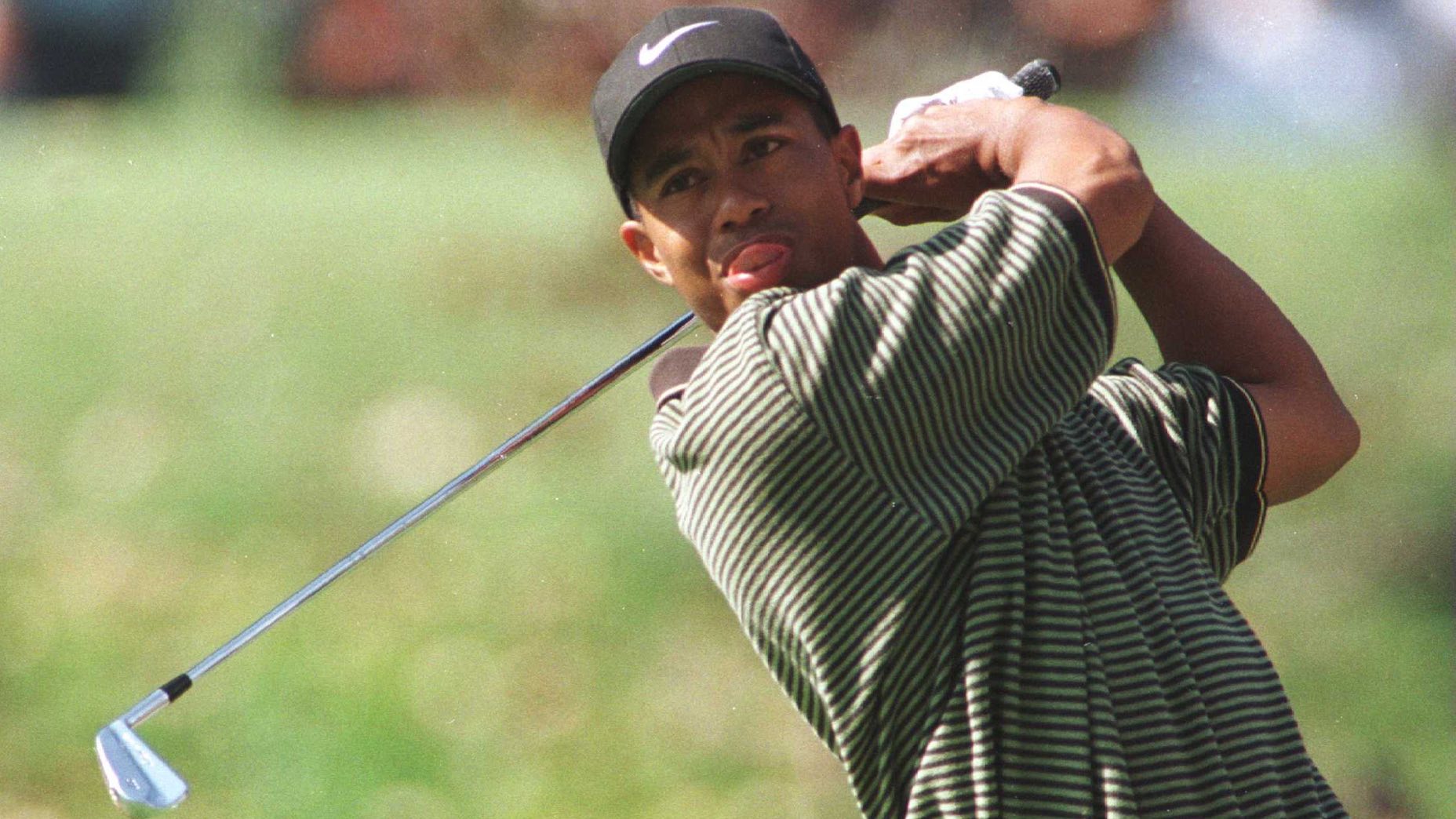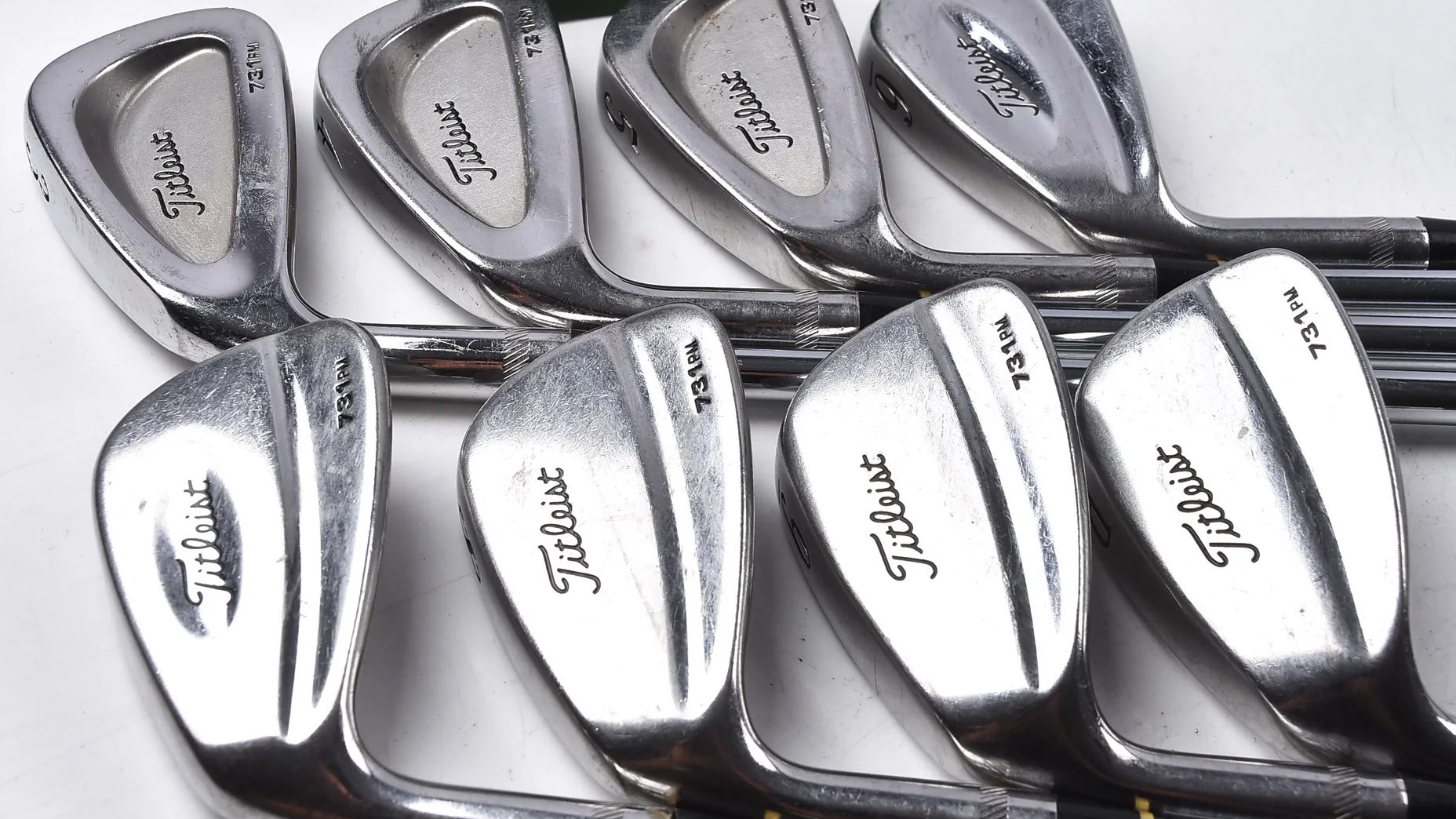Golf
Titleist 731PM irons, trendsetting Tiger and gear rabbit holes

Woods was one of the first pros to combine different iron models to make a set.
Getty Images
Sifting through the equipment stash at home can send you down interesting rabbit holes. When you’re GOLF’s managing equipment editor, the general assumption is the word “stash” is code for “two warehouses full of clubs.” It’s not. Like most weekend golfers, I’m constantly thinning out the herd to avoid a future spot on Hoarders. Only the strong and semi-reliable survive these days.
During a recent gear clean-out, I happened upon a well-worn set of Titleist 731PMs — arguably my favorite iron set ever created — from my last stint as a plus-handicap. As a southpaw who never had the opportunity to wield a set of Titleist 990Bs (yes, I’m still bitter they only made them in right-handed), the 731PM was Titleist’s mea culpa.
Initially designed for Phil Mickelson, the lefty-only creation was Titleist’s first designated combo set that expertly transitioned from cavity-back long irons into high muscle blades. Not only was the setup composition ahead of its time but each head was cast from 431 stainless steel, not forged. That included the blades. It remains the only time Titleist has produced a set of cast musclebacks.

GOLF
The set is a reminder of how far the industry has come in the last two decades. Before the 731PM, many manufacturers were reticent to mix and match iron sets to create a true combo set. Only in the last decade has the industry fully embraced blending different sets if a golfer wants to pair more forgiveness and a higher launch in the long irons with compact short irons possessing workability and a controlled flight. On the Tour side, roughly 70-75 percent of pros have multiple iron models in the bag. This is a trend that isn’t going away anytime soon.
But let’s get back to the 731PM. As I admired the worn faces, my mind immediately went to the origin of blended sets at the Tour level. Phil won the 2004 Masters with 731PM in the bag, marking an important moment for combo sets. However, it wasn’t really a true combo set combining multiple models. This was a Phil-specific setup meant to meet all of his needs. (It should be noted that Phil still plays numerous Callaway iron models, so this wasn’t a fleeting trend for Lefty.)
As I started to do some digging with the help of Google and my Tour rep Rolodex, I came across some notes from several years ago on the equipment setup Tiger Woods used to win the 1997 Masters. Did you know Tiger torched Augusta National with a blended iron set? Because he most definitely did.

Getty Images
Woods’ setup that week consisted of two different Mizuno models: MP-14 and MP-29. As the story goes, Woods noticed subtle offset changes from the long to short irons between the sets. It didn’t take him long to realize he could combine the two models to create a singular set with minimal offset.
“For him, it was all about trying to get the least amount of offset in his entire iron set,” Mizuno Tour rep Jeff Cook, who started with the company in 1997, told me years ago. “You have to remember that Tiger played Mizuno irons going back to his time in junior golf and at [Stanford University], so he was well versed in our product. When you spend that much time around something, you start to pick up on subtle differences.”
For Woods, the MP-29 provided less offset in the long irons than the MP-14 and vice versa in the mid and short irons. To get the perfect amount of offset, Woods split the set in half, using MP-29 in the 2- through 4-iron and MP-14 in the 5-iron through pitching wedge.
The iron setup all but confirms Woods’ place as a gear trendsetter, which makes sense when you look at his early acceptance of solid-construction golf balls. Even though the 15-time major winner still plays some of the weakest iron lofts on Tour and was one of the last to embrace adjustable metalwoods, he still sought out equipment edges along the way.
As for whether Woods was the first Tour pro to blend iron models, I can confirm others did come before him. As Golf Digest’s E. Michael Johnson wrote in 2013, Fred Couples paired Lynx Black Cat long irons (2-5) with Parallax mid and short irons (6-PW) during the 1995 season, which precedes Woods’ “Hello World” moment when he turned pro in 1996.
Even if Woods wasn’t the first, he was still well ahead of his time, just like Titleist’s introduction of the 731PM.











